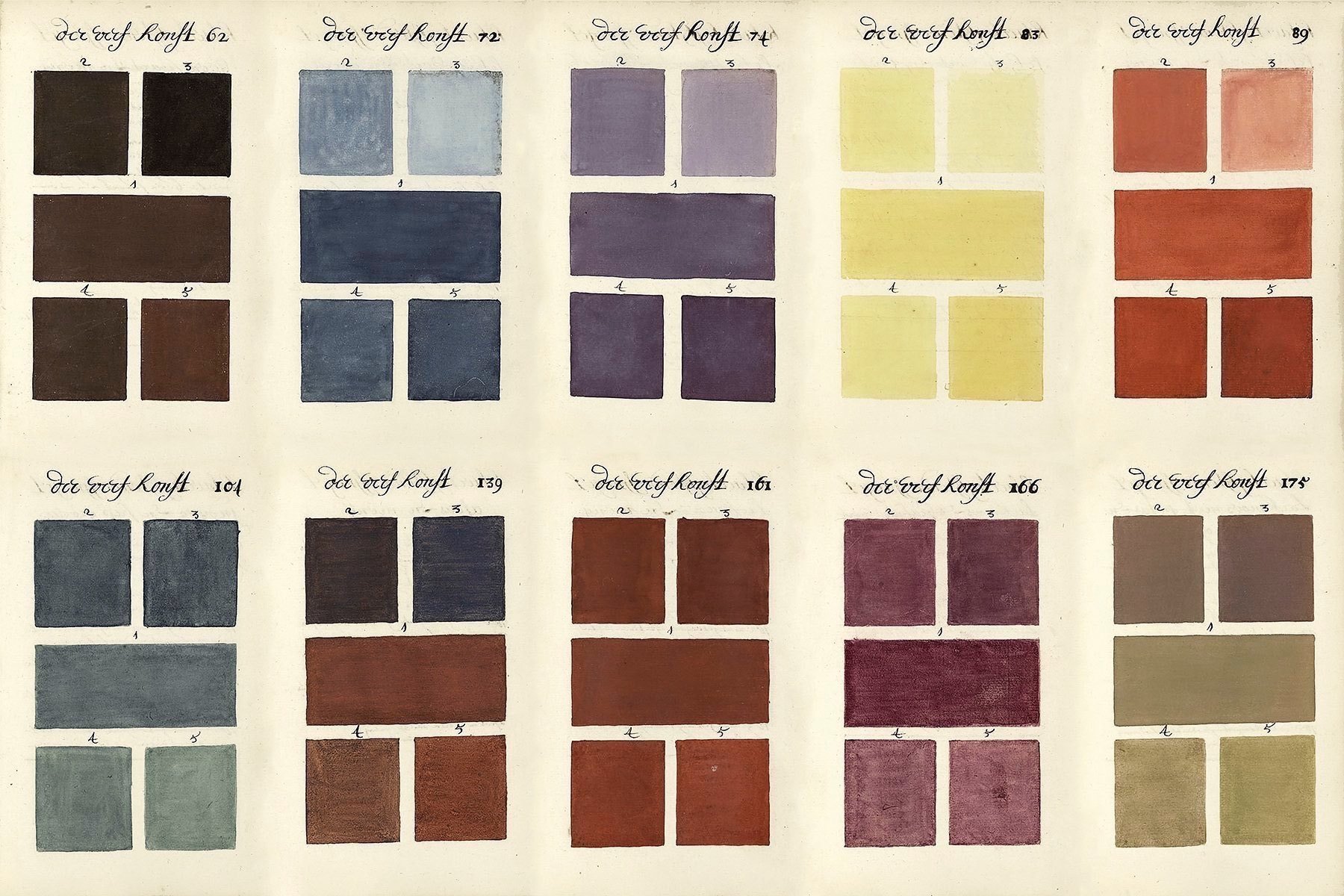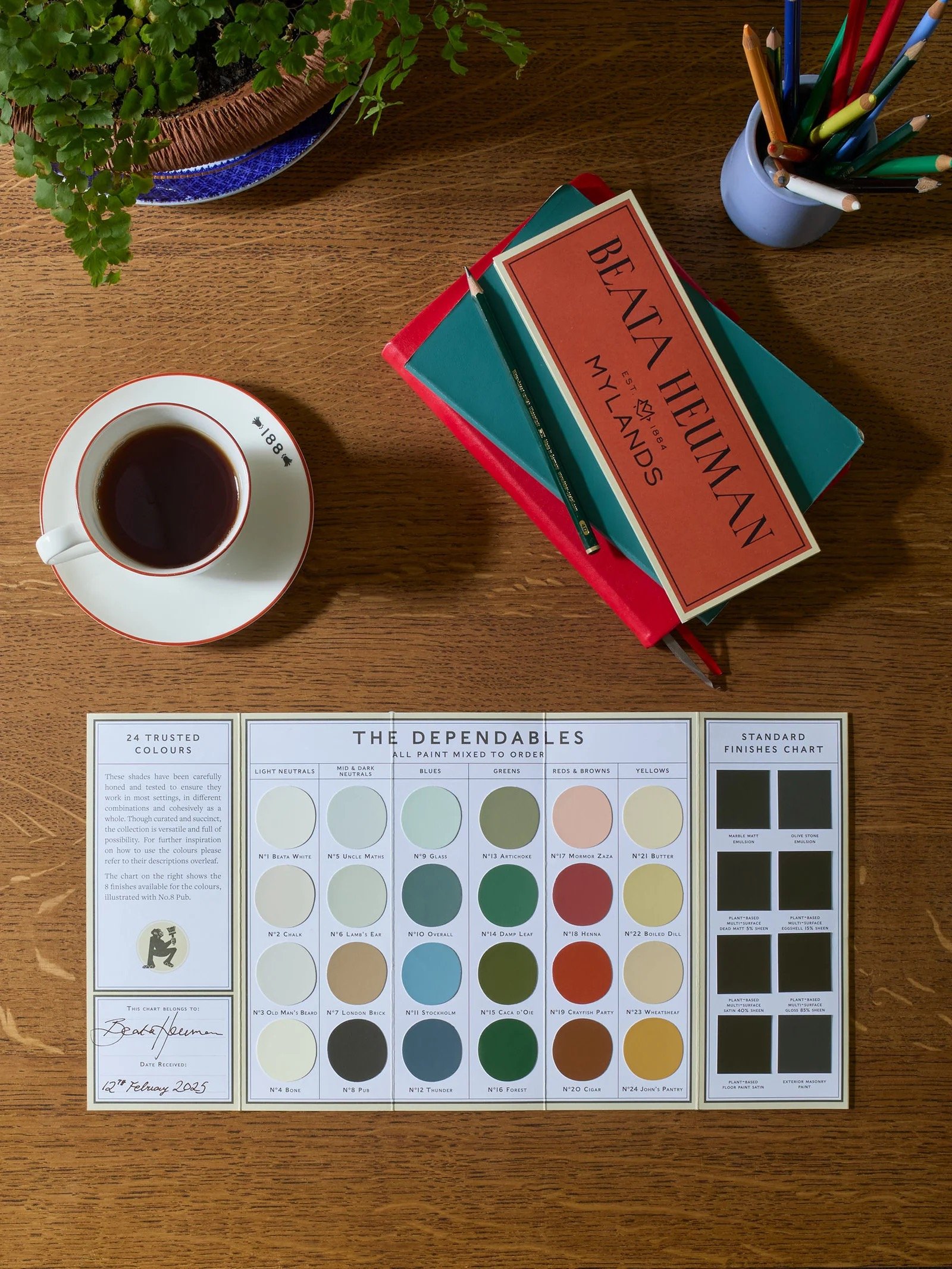PAINT + COLOR & HOW TO CHOOSE
Image: Farrow & Ball
INTRODUCTION:
Color is an amazing tool. It can have a significant impact on the way we use our space and how we feel in it. It creates a narrative, a story about who we are and a glimpse into our personalities and character. It gives our visitors an open door to something some of us hold tight under lock and key; a true reflection of who we are on the inside, a visual diary shall we say? Yes, on one hand color can feel like serious business, but it can also be so much fun if we let ourselves enjoy it and try not to take it too seriously. An oxymoron? Maybe so, but I suppose two things can be true at once.
If you love color, but struggle with how to implement it into your home, you are not alone. Choosing to add color to your wardrobe vs. styling your entire home with color can feel like a huge commitment, both from a financial standpoint and a design perspective. Many of us have spent years resorting only to whites, grays and neutrals in our interiors and in turn we’ve created a safety net of what feels comfortable. Now, that zone of comfort, has made it very difficult to break through and explore more options when it comes to paint color. Now, I have no opposition to neutral color schemes if it fits the space and the homeowner, but I also know many people want to implement color in their homes but don’t quite know how to navigate their choices. So, whether you’re ready to move on from wall to wall neutral, or you embrace color currently and are just looking for some additional guidance please read on.
Image: Vintage Color Chart (You can buy this as printable art on Etsy - click image for link):
My goal is not to provide you with too much technical knowledge or specific color schemes, but easy to digest tips and tricks that will hopefully help you make color decisions on your own with confidence. You can apply these concepts to paint or for any use of color in your home.
1.) Try not to let fear prevent you from getting started:
A major roadblock one can face with color (and pattern for that matter), is using the fear of getting sick of a color as a reason to forgo using it all together. I would like to counteract this concept by affirming we can tire of a neutral setting just as quickly as we can tire of color. In fact, if a wall-to-wall neutral home isn’t a true reflection of who you are, you may tire of it much quicker than using a color that you really enjoy. Also keep in mind that a predominately neutral home, can still implement color in an affective and complementary way.
2.) Don’t be afraid of falling victim to trends:
A discussion that has stuck with me throughout the years was one in college by an instructor of mine on the 20-year lifecycle of design trends. He sheepishly remarked how in two decades we would all be cringing at the work our instructors and other interior designers were producing at the time. It felt as though he was already embarrassed for what was to come 20 years down the road; as if it was inevitable, not even a question that this would come to be. I scoffed at this prospect and thought it could hardly be true. Now, 20 years later, that lifecycle seems only but 5-10 years thanks to social media and our consumption-centric society. What I’m trying to say is no matter how hard we try; we are always going to be a subject of our time. Rarely, do you walk into a home decades after it was last touched and feel as though it is as fresh and contemporary as the day it was finished. The best we can do is make selections we truly enjoy and be weary of what feels and looks fleeting. Try to avoid splurging on those items and introduce trends you like on lower commitment finds. Remind yourself if you like it, there is no reason to justify it, to yourself or anyone else, even if it does happen to be a so called “trend”. It’s an overused word and puts too much pressure and apprehension into decision making.
3.) Start small:
Trying to decide on a color scheme for an entire home can be daunting. Start with one space at a time and build on from there. Once that space feels right, making choices that coordinate for adjacent rooms will come with much more ease. If you aren’t feeling brave enough or your budget doesn’t allow for painting walls or investing in larger furniture items with color, try starting with accessories. Add color to throw pillows, blankets, art, rugs, and home décor. Adding these items to the foreground are a great compliment to a neutral background.
4.) How to make your color choices/where to start:
If you struggle to know exactly what paint colors you might like, or which colors compliment each other well, there are many ways to find inspiration or to point you in the right direction. First, start by thinking about how you want the space to feel. From there, you can narrow in on which colors make you feel that way. You can also find inspiration from colors you already have and enjoy in your home, Try implementing colors from your art, bedding, rugs etc. Now, there are many theories on color, but I happen to believe everyone perceives and is affected by color differently. So only you (and your partner), can determine what will feel right for your space.
5.) You: “Yea, Yea, but WHAT colors should I use?”
Sorry, I can’t give you a direct answer to that without knowing you or your home! But what I will say is try using tonal colors, or in layman’s terms muted colors. Here is where things get a little more technical, but I promise, it’s not that bad. A tone is a color that has both white and black added to it (also known as grey). This helps to create more complexity within the color and adds a calming effect. Bonus points if you choose a secondary color. For a refresher on color basics, a secondary color is a color created by mixing two primary colors. The result is a color that is comprised of 4 parts: 2 color hues plus black and white. This adds maximum depth and interest. Now, don’t take it too literally, for example the color does not need to have equal parts blue and green to qualify! By using tonal colors, you are less likely to tire of a color in the long run because it has this added depth and complexity. In some light, it might lean more toward one color than another, offering a variety of color perspectives throughout the day. Another advantage to using tonal colors is their ability to play well with a neutral base, making it easy to coordinate your décor. If you choose to pair two tonal colors together, regardless of your choices, they are typically a good match since each are grounded with both white and black.
6.) Try leaning on small selection, curated paint brands:
If you are struggling to select specific colors, this is a great place to start. Some brands to explore are Farrow & Ball, Clare Paint, and Backdrop. These brands are often higher-end paints, but don’t let that stop you from grabbing a sample card and using it for inspiration. I also recommend exploring the Historical collections within paint brands. Benjamin Moore and Sherwin Williams are great options for this. Their colors are typically muted but have also literally stood the test of time. It’s much less overwhelming to choose from a curated selection of paints. A new one that I am looking forward to will be available in the US starting this spring by the renowned Interior Designer, Beata Heuman, with literally only 24 colors to choose from.
Image: https://beataheuman.com
7.) Building a palette can feel intimidating but trust your intuition:
To keep things simple, you can start with a monochromatic scheme sticking to one color hue, possibly in different shades and tints (dark and light) for variation, mixed with a neutral base. Analogous schemes are another good choice. They use colors that are next to one another on the color wheel and can be a less complicated choice. In the end, that gut feeling of what feels right should lead you in the right direction.
8.) Other quick tips and ideas for implementation:
Thinking outside of the box in terms of where to apply paint color can help a space feel more intriguing and even make you feel more comfortable with the idea of color (believe it or not). Try using the same color on the trim as well as the walls. White trim with a saturated color can feel busy and overly contrasting. When you paint the trim the same color as the walls, it makes the space feel larger, more relaxed and can even make a color feel more neutral. If you are feeling extra brave, expand to the ceiling. Of course, this is not ideal for all spaces. I cannot stress enough to start in one room and expand from there as you gain comfort and confidence in your choices.
Image: Plural Design Studio
Color: Clare Paint | Dirty Chai
9.) How samples swatches look different from full application:
My number one suggestion when exploring paint colors is to sample, sample, sample! Use sample cards/swatches as a first draft for selecting your favorites only. Once you have narrowed it down to a handful or so make sure to purchase a real paint sample of your final choices. There is an added cost here, but trust me it’s so worth it to make sure you get the outcome you are looking for. Color look so much more saturated and vibrant once applied to the wall in large scale. This is one of the reasons I love tonal/muted colors.
10.) Don’t forget, it’s just paint!
Yes, painting is hard work and mistakes do happen…. BUT you can always repaint. Even if you don’t like what you’ve chosen at first, try living with it for a few months (at least). This will give your pocket book, and if you are DIYing your body some much needed rest before trying again. Sometimes there’s an initial shock that just takes some getting used to. Also, a change art and accessories can always help adjust the ambiance. Hope this helps and best of luck on your painting journey. Links from brands/collections mentioned above follow.
LINKS TO RESOURCES MENTIONED ABOVE:
Clare Paint (A zero VOC brand, Greenguard Gold certified)
Backdrop (Green Wise certified)
This is our current home paint palette; a warm white neutral base with supporting tonal hues in bathrooms, bedrooms, on trim and cabinetry.
Good luck on your painting journey! I hope this has provided at least some assistance on making your selections.






